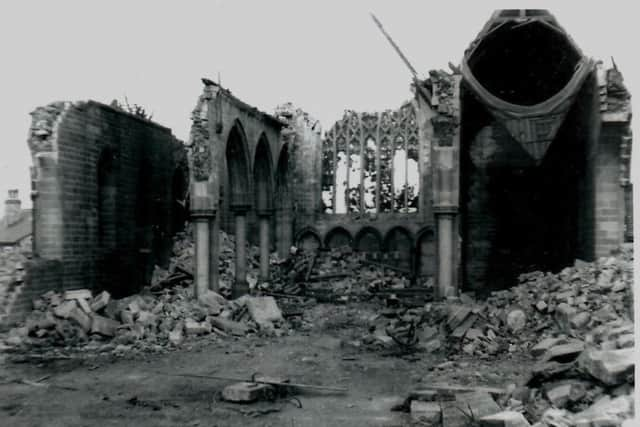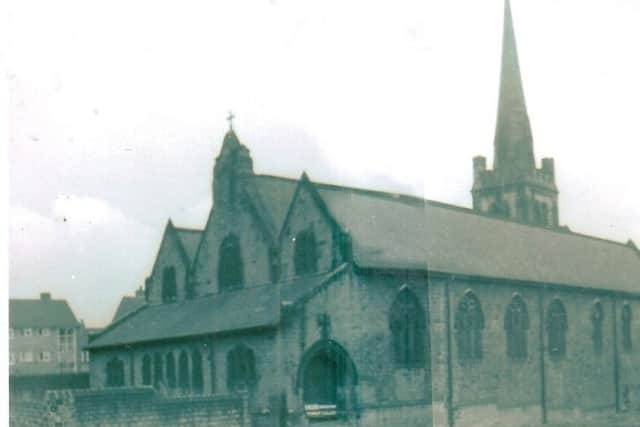Many villages no longer have place of worship


Many villages in Dewsbury no longer have a Christian presence and I know that other churches could be closing down in the not too distant future.
Indeed, so common are church closures that sometimes they close down with little or no comment, as was the case with St Peter’s in Earlsheaton, which closed some months ago.
Advertisement
Hide AdAdvertisement
Hide AdIt would have been headline news at one time but now it doesn’t even raise a paragraph because church closures aren’t really regarded as news any more.


The biggest cultural change our town has seen in recent years has been the wholesale closure of churches.
What would our parents and grandparent feel about these places of Christian worship closing down, some even being reduced to rubble?
These were buildings which our forefathers once struggled to build, buildings they put their hearts and souls into, not to mention their hard-earned money. Many people today, no matter what denomination, believe that these closures have left our town much the poorer, both spiritually and architecturally.
Advertisement
Hide AdAdvertisement
Hide AdSome were built 200 years ago and became an important part of our heritage and also part of our landscape.


Their steeples and spires, like our mill chimneys, could be seen for miles around.
Our mill chimneys are long gone, and some may say thank God for that, but how sad it would be if all our church spires and church towers also disappeared.
At least three church steeples have disappeared in Dewsbury in my time – St Philip’s, Eastborough; St John the Baptist, Westtown, and St Peter’s, Earlsheaton.
Advertisement
Hide AdAdvertisement
Hide AdI remember St John the Baptist being demolished during the slum clearance of Westtown in the 1960s.


Promises were made at the time that it would be saved, and later promises that if it had to be pulled down it would be rebuilt elsewhere. It wasn’t.
Church spires are so typical of the English landscape that you know you are in England when you see them rising into the sky.
Whenever I look at a church spire, I literally hold my breath in wonderment, and say a prayer of thanksgiving to those souls who built it.
Advertisement
Hide AdAdvertisement
Hide AdThey remind me of the days when there was a great well of spirituality in Dewsbury which people drew upon, especially in times of need.


How many mill workers in the past have looked up from their looms and out of the window to see majestic church spires nearby, and for a brief moment the cares of the day have been wiped away?
These spires once spoke to the soul and gave local people a great sense of peace, security and belonging, making them proud to belong to a town with so much beauty and history.
Take them all way, and for many of us, Dewsbury would no longer be our home town, and all signs of Christianity would be gone forever.
Advertisement
Hide AdAdvertisement
Hide AdOver the years I have chosen to go to different churches on Sunday morning, to support them all and to see how they are all faring.
I have been greatly saddened to see how many of them are struggling, and I wonder if it isn’t time for us all, no matter what denomination, to come together for the sake of Christian unity.
From being a child I have always been attracted to churches of different faiths, even though I was a Catholic and risked ex-communication from my own church.
I was three years old when I entered my first “protestant” chapel – Ebenezer Congregational Church – now the United Reformed and Methodist Church. It was to attend a Christmas party for poor children, and I’ve loved that church ever since.
Advertisement
Hide AdAdvertisement
Hide AdWhen I was six I went to a Harvest Festival in Springfield Congregational Church (now demolished ) and later became a member of a Quaker Sunday School in the Friends Meeting House, Bradford Road, Dewsbury.
When I was 14, I went to my first Beetle Drive at Granville Street Methodist Chapel near my home on the Flatts in Dewsbury, and I also went to Centenery Methodist Church with my non-Catholic friends.
At the age of 17, I broke the most important rule in the Catholic Church by receiving bread and wine in Leeds Road Baptist Church, which was regarded as a mortal sin. Thankfully, I wasn’t struck by lightning.
Over the years I have covered every church event under the sun for the Reporter, but doing this has not diminished my Catholic faith, quite the opposite, it has enhanced it.
Advertisement
Hide AdAdvertisement
Hide AdAttending different churches has taught me more about the bread and butter of Christianity than I could ever have learned from my Catholic catechism which I learned by rote every morning at school.
Today, we find that Catholic churches are now suffering the same dwindling attendances and financial difficulties as their Methodist and Anglican counterparts.
They also have a problem attracting to the priesthood young men with vocations to replace the older ones.
In coming weeks I hope to write more about the closure of churches and how the present ones are dealing with the problems facing them.
In particular about one church I know for sure will soon be closing.